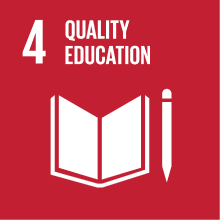HISPANIC AMERICAN LITERATURE 1
- Academic year
- 2025/2026 Syllabus of previous years
- Official course title
- LETTERATURE ISPANO-AMERICANE 1
- Course code
- LT001Q (AF:560322 AR:321199)
- Teaching language
- Italian
- Modality
- On campus classes
- ECTS credits
- 6
- Degree level
- Bachelor's Degree Programme
- Academic Discipline
- L-LIN/06
- Period
- 1st Semester
- Course year
- 1
- Where
- VENEZIA
- Moodle
- Go to Moodle page
Contribution of the course to the overall degree programme goals
Expected learning outcomes
a. knowledge in the historical-literary field of theoretical notions inherent to the history of Hispanic America from the "Discovery" to the present day, of the main cultural issues related to it, as well as literary productions (diachronic perspective).
b. develop the technological and terminological tools to be able to interpret literary texts from a cultural and narratological point of view.
c. ability to understand Hispanic-American literary texts of the periods studied and to apply the acquired notions and theoretical tools to selected texts among the most important expressions of Hispanic America of the periods considered. Ability to analyze and comment on the texts from a cultural and literary-critical point of view in their original elaboration in Spanish, and to identify themes and problems common to different poetics and authors (synchronic perspective).
2. Applied knowledge and understanding:
a. ability to apply the theoretical knowledge acquired to the works and texts covered during the course;
b. ability to analyze and compare texts and to develop conceptual syntheses;
c. ability to place a text and a literary phenomenon in their context of production and reception;
3. Autonomy of judgment: strengthen the exercise of critical thinking and the ability to formulate autonomous hypotheses and judgments argued in a coherent and effective manner.
4. Communication skills: development of communication skills aimed at a coherent, clear, terminologically precise and effective exposition both in oral interaction in class on topics related to the course and subsequently in the exam.
5. Ability to learn: ability to infer, relate data, summarize, organize the coherent and autonomous analysis of a text and/or a literary process.
Pre-requirements
Contents
The course will be divided into three main parts:
1. At first, students will be presented with an introduction to the problem of the "name" in Hispanic America as an instrument of colonization of the imaginary and cultural domain, as well as an overview of the "faces" that characterize cultures and Hispano-American literatures and which, on the other hand, contribute to the emancipation of the continent.
2. In the second part of the course, will be presented the main historical figures who in the epochs of the "conquest" and the colony of Hispanic America, as well as in the twentieth century, constituted fundamental points of reference for cultural and literary translation as a strategy of construction and deconstruction of identity.
3. The third part will provide for the reading and critical-cultural analysis of a selection of Hispanic-American texts that are particularly significant in the literary and cultural fields.
Referral texts
An anthology will be furnished during the course. It will contain selected texts written by the authors that will be considered in the course:
-Horacio Quiroga, “El almohadón de plumas”, in Cuentos de amor, de locura y de muerte (1917)
_______________ “A la deriva”, in Cuentos de amor, de locura y de muerte (1917)
-Miguel Ángel Asturias, “Leyenda de la Tatuana”, in Leyendas de Guatemala (1930)
-Lydia Cabrera, “Arere Marekén”, in Cuentos negros de Cuba (1940).
-Jorge Luis Borges, “El sur”, in Ficciones (1944).
-Julio Cortázar, “Casa tomada”, in Bestiario (1951)
-Pablo Neruda, “Poema 20” (Veinte poemas de amor y una canción desesperada, 1924), “Walking around” (Residencia en la tierra II, 1935), “Alturas de Machu Pichu” (Canto general, 1950) “Oda a los calcetines” (Nuevas odas elementales, 1956), “Estación invóvil” (Estravagario, 1958)
-Carlos Fuentes, “Chac-mool” (Los días enmascarados, 1954)
CRITICAL BIBLIOGRAPHY:
Oviedo, Jose Miguel, Historia de la literatura hispanoamericana 3. Postmodernismo, Vanguardia, Regionalismo, Madrid, Alianza, 2001 (pp. 11-28; 494-502).
________________ Historia de la literatura hispanoamericana 4. De Borges al presente, Madrid, Alianza, 2001 (15-37; 161-174; 315-328).
Etcheverry, José (1987), “La retórica del almohadón”, en Ángel Flores (comp.), Aproximaciones a Horacio Quiroga. Caracas: Monte Ávila Editores, pp. 215-219.
Alazraki, Jaime (1983), “Cómo está hecho «Casa tomada»?”, en En busca del unicornio. Los cuentos de Julio Cortázar, Madrid, Gredos, pp. 140-148.
Cannavacciuolo, Margherita, “Las fronteras narrativas de Lydia Cabrera: heterogeneidad y devenir”, en Revolución y Cultura, pp. 24-33
Sarlo, Beatriz, "Borges un escritor en las orillas", Buenos Aires, Espasa Calpe Argentina, pp. 83-108 (in particolare 100-108).
RECOMMENDED BIBLIOGRAPHY:
Alazraki, Jaime (1994), Hacia Cortázar: aproximación a su obra, Barcelona, Anthropos.
Barrera Lopez, Trinidad (coord.), Historia de la Literatura Hispanoamericana, Madrid, Catedra, 2008.
Bellini, Giuseppe, Nueva historia de la literatura hispanoamericana, Madrid, Castalia, 1997.
Molloy, Sylvia, “La composición del personaje en la ficción de Borges”, Nueva Revista de Filologia Hispánica, Tomo XXVI, num. 1, pp. 130-140.
Rojas Mix, Miguel (2006), I cento nomi d'America, Firenze, Le lettere.
Todorov, Tzvetan (1984), La conquista dell’America: il problema dell’altro, Torino, Einaudi.
Assessment methods
Type of exam
Grading scale
1) knowledge of the topics covered in class and in the bibliography (range 10 points)
2) ability to hierarchize information (range 10 points)
3) use of the appropriate specific terminology (range 10 points)
Honors will be awarded in the presence of knowledge and ability to understand applied in reference to the program, ability to formulate judgments, relevant autonomy and communication skills, excellent.
Teaching methods
Further information
Moreover, every student is recommended to follow additional lessons and round-table conferences that may be held between September and December 2025.
2030 Agenda for Sustainable Development Goals
This subject deals with topics related to the macro-area "Human capital, health, education" and contributes to the achievement of one or more goals of U. N. Agenda for Sustainable Development


